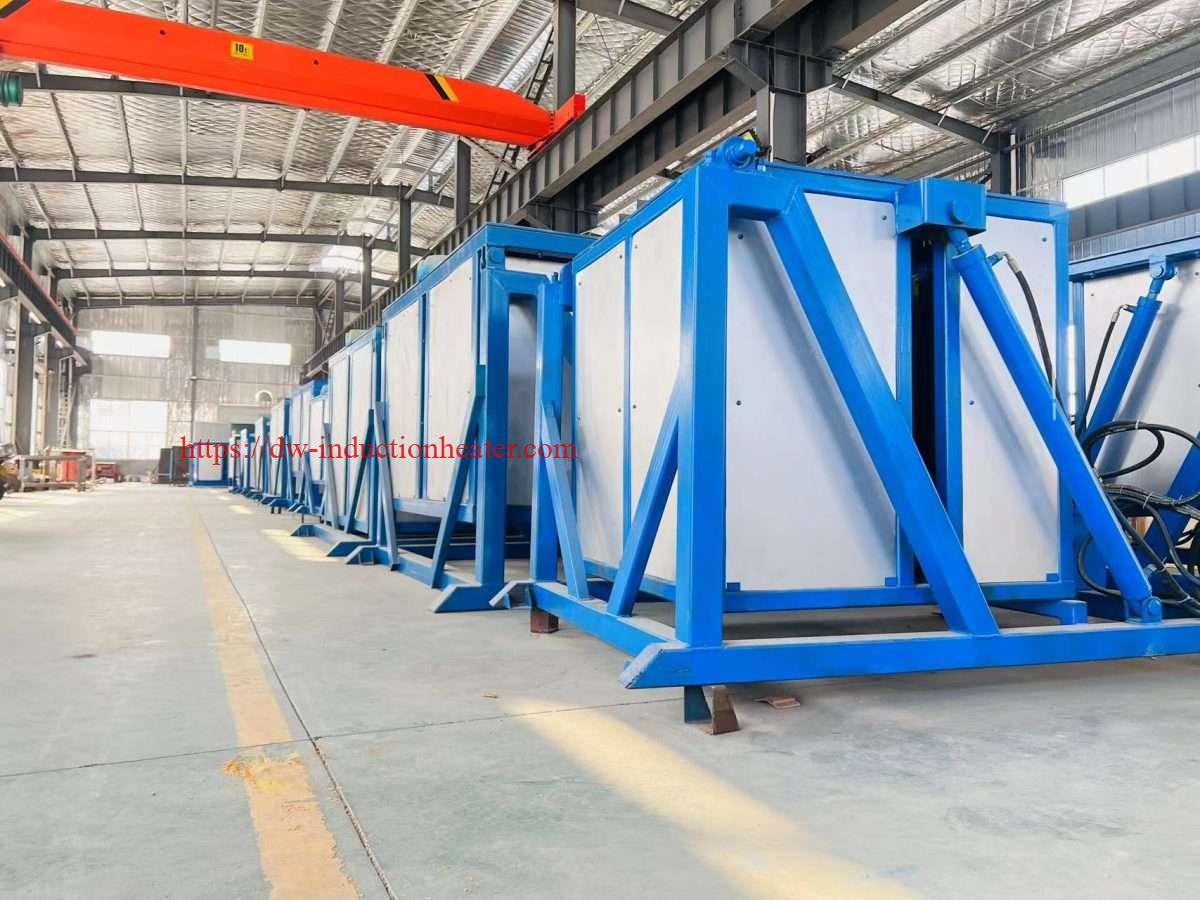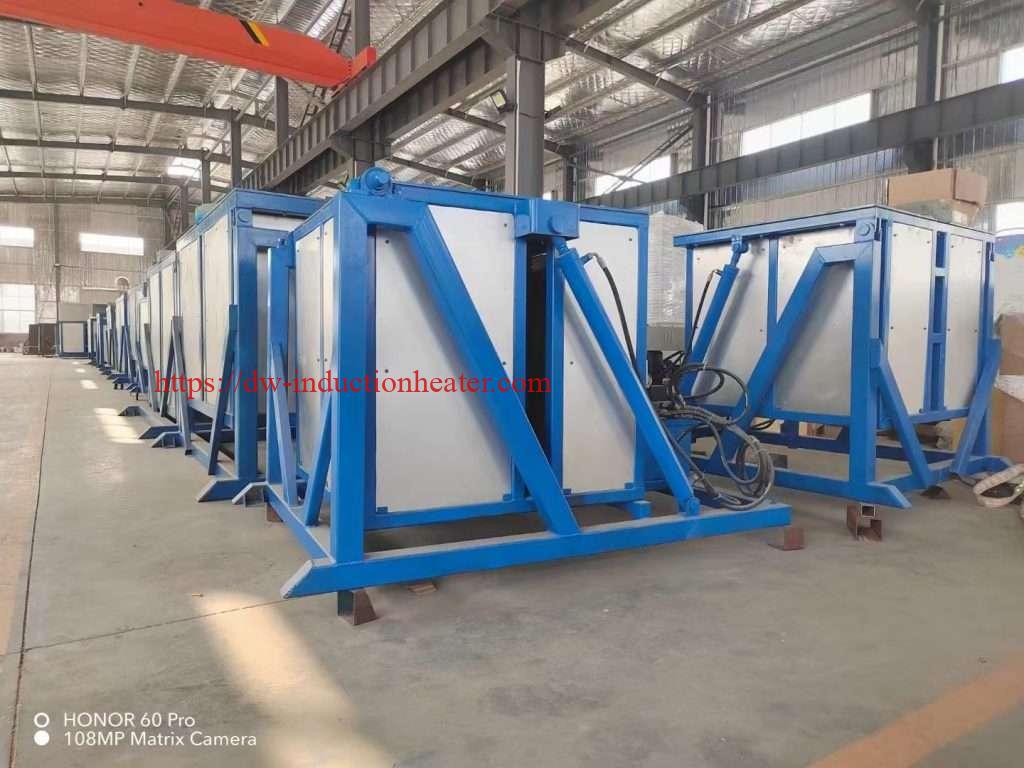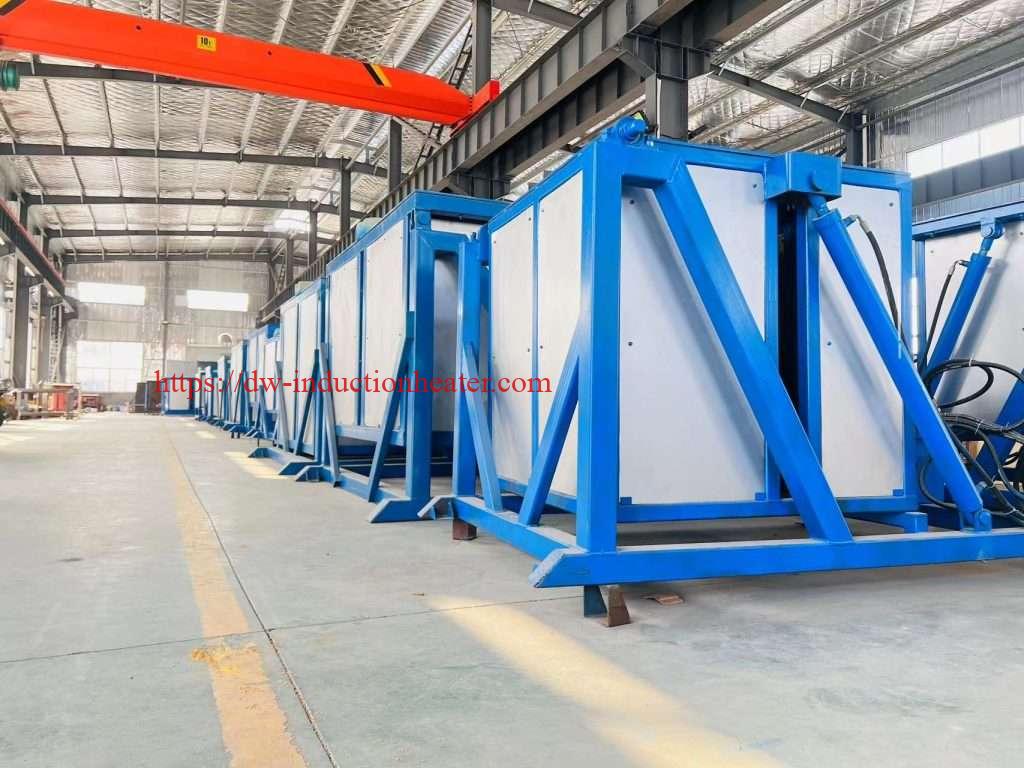
Maximizing Efficiency and Productivity with Induction Aluminum Melting Furnace
Induction melting is a widely adopted method for melting metals in the foundry industry. It offers wide-ranging advantages including fast melting times, precise temperature control, and reduced energy costs. Induction aluminum melting furnaces have become an increasingly popular option in the aluminum industry. This paper will explore the working principle of induction aluminum melting furnaces, the advantages and disadvantages of using these furnaces, and the various applications of induction melting in the aluminum industry. Introduction:
Induction aluminum melting furnaces are widely used in the foundry industry for melting aluminum alloys. The process involves the use of electromagnetic fields to generate electrical currents within the metal, which in turn melt it. Compared to other forms of melting such as gas-fired furnaces, electric resistance furnaces, and oil-fired furnaces, induction melting is more efficient and has a higher capacity for melting.
Working Principle:
Induction melting involves the use of alternating currents to produce an electromagnetic field that generates electrical currents within the metal. The electrical current induces electrical resistance, which creates heat and melts the metal. The furnace consists of an induction coil that acts as the source of the electromagnetic field and a crucible that contains the metal to be melted. When the coil is energized, the electromagnetic field induces a current within the metal inside the crucible, causing it to heat up and eventually melt.
Introduction:
Induction aluminum melting furnaces are widely used in the foundry industry for melting aluminum alloys. The process involves the use of electromagnetic fields to generate electrical currents within the metal, which in turn melt it. Compared to other forms of melting such as gas-fired furnaces, electric resistance furnaces, and oil-fired furnaces, induction melting is more efficient and has a higher capacity for melting.
Working Principle:
Induction melting involves the use of alternating currents to produce an electromagnetic field that generates electrical currents within the metal. The electrical current induces electrical resistance, which creates heat and melts the metal. The furnace consists of an induction coil that acts as the source of the electromagnetic field and a crucible that contains the metal to be melted. When the coil is energized, the electromagnetic field induces a current within the metal inside the crucible, causing it to heat up and eventually melt. Advantages of Induction Aluminum Melting Furnaces:
Induction aluminum melting furnaces offer several advantages over other forms of melting. The key advantages are:
1. Faster melting times - Induction furnaces can melt aluminum alloys much faster compared to other methods, reducing the overall processing time.
2. Precise temperature control – Induction furnaces can vary the heat input, ensuring accurate temperature control throughout the melting process.
3. Reduced energy costs – Induction furnaces are more energy-efficient, and this contributes to lower energy costs.
4. Cleaner melting – Induction furnaces are cleaner than gas-fired furnaces as they do not produce pollutants or emissions.
5. Minimal wastage – Induction furnaces have a high yield, and there is minimal wastage of molten metal during the melting process.
Advantages of Induction Aluminum Melting Furnaces:
Induction aluminum melting furnaces offer several advantages over other forms of melting. The key advantages are:
1. Faster melting times - Induction furnaces can melt aluminum alloys much faster compared to other methods, reducing the overall processing time.
2. Precise temperature control – Induction furnaces can vary the heat input, ensuring accurate temperature control throughout the melting process.
3. Reduced energy costs – Induction furnaces are more energy-efficient, and this contributes to lower energy costs.
4. Cleaner melting – Induction furnaces are cleaner than gas-fired furnaces as they do not produce pollutants or emissions.
5. Minimal wastage – Induction furnaces have a high yield, and there is minimal wastage of molten metal during the melting process.
Factors to Consider When Choosing an Induction Melting Furnace:
Several factors should be considered when choosing an induction melting furnace. First, the type of metal being melted should be considered, as different metals require different melting temperatures and times. Second, the volume of metal being melted should be considered, as some furnaces are better suited for high-volume melting. Third, the level of precision and accuracy required should be considered, as some furnaces are better suited for high-precision melting. Finally, the available space and power supply should be considered, as some furnaces require more space and power than others. Applications of Induction Aluminum Melting Furnaces: Induction aluminum melting furnaces have a wide range of applications, including the production of: 1. Automotive components such as engine blocks, wheels, and brake calipers 2. Aerospace parts such as frames, wings, and fuselages 3. Consumer goods such as cans, containers, and cookware 4. Building and construction components such as pipes, sheets, and panels Disadvantages of Induction Aluminum Melting Furnaces: While induction aluminum melting furnaces have many advantages, there are some disadvantages to consider. These include: 1. Higher capital cost – Induction furnaces are more expensive to purchase than gas or oil-fired furnaces. 2. Higher maintenance costs – Induction furnaces require regular maintenance, which can increase operating costs. 3. Complexity – Induction aluminum melting furnaces are complex systems that require skilled operators. Conclusion:
Induction aluminum melting furnaces are a popular option in the foundry industry for melting aluminum alloys. The process involves the use of electromagnetic fields to generate electrical currents within the metal, which in turn melt it. The advantages of using induction aluminum melting furnaces include faster melting times, precise temperature control, reduced energy costs, minimal wastage, and cleaner melting. The technologies are extensively used across a wide range of applications, including the production of automotive and aerospace components, consumer goods, and building and construction components. However, induction aluminum melting furnaces have some disadvantages, such as higher capital and maintenance costs and complexity. Therefore, The foundry industry has to weigh the advantages against the disadvantages to determine if induction aluminum melting furnaces are a suitable option for their operations.
Conclusion:
Induction aluminum melting furnaces are a popular option in the foundry industry for melting aluminum alloys. The process involves the use of electromagnetic fields to generate electrical currents within the metal, which in turn melt it. The advantages of using induction aluminum melting furnaces include faster melting times, precise temperature control, reduced energy costs, minimal wastage, and cleaner melting. The technologies are extensively used across a wide range of applications, including the production of automotive and aerospace components, consumer goods, and building and construction components. However, induction aluminum melting furnaces have some disadvantages, such as higher capital and maintenance costs and complexity. Therefore, The foundry industry has to weigh the advantages against the disadvantages to determine if induction aluminum melting furnaces are a suitable option for their operations.
 https://dw-inductionheater.com/maximizing-efficiency-and-productivity-with-induction-aluminum-melting-furnace.html?feed_id=207886&_unique_id=646ffcb93eb57
https://dw-inductionheater.com/maximizing-efficiency-and-productivity-with-induction-aluminum-melting-furnace.html?feed_id=207886&_unique_id=646ffcb93eb57
